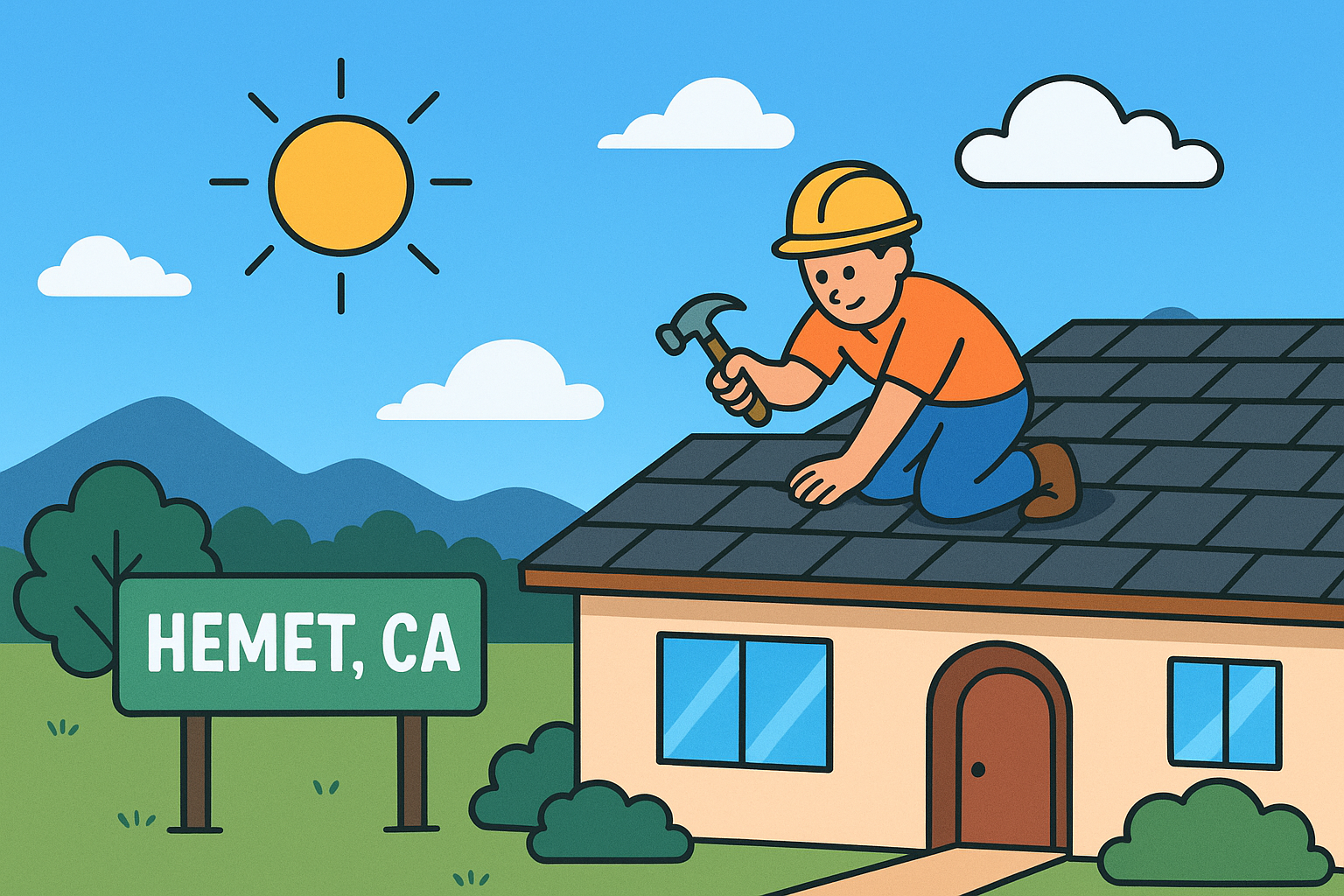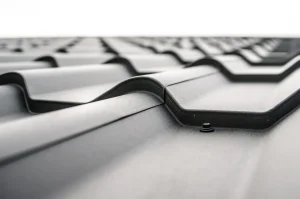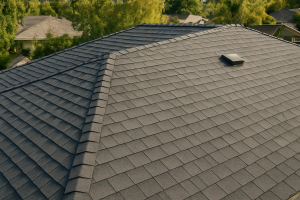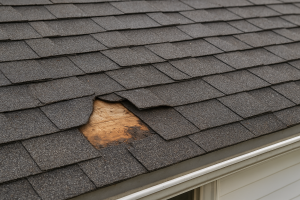Hemet, CA sits in the San Jacinto Valley, where summer heat, seasonal winds, and occasional rainstorms make roofing a critical part of every home’s design. While most people see a roof as just a protective covering, in Hemet’s climate it plays a much bigger role: keeping homes cool, improving energy efficiency, and extending the life of the structure beneath.
This blog explores how climate shapes roofing needs in Hemet, the materials most suited for local conditions, and how energy efficiency is driving the future of roofing in Southern California.
The Climate Challenge in Hemet
Hemet’s climate is characterized by hot, dry summers and mild winters with scattered rain. These weather patterns create unique challenges for roofing systems:
-
High UV Exposure – Intense sunlight can cause shingles to fade, crack, or lose their protective coating. UV damage is one of the leading causes of roof deterioration in Southern California.
-
Triple-Digit Summers – Roofs can heat up to 150°F or more in peak summer, transferring that heat into the home and driving up cooling costs.
-
Seasonal Rainfall – While rainfall is limited, it often comes in short bursts. Roofs must shed water quickly to prevent leaks and interior damage.
-
Wind Events – Santa Ana winds can loosen shingles, dislodge flashing, and expose weak points in roofing systems.
For homeowners in Hemet, a roof is not just protection from the elements—it’s a system that must work year-round against a mix of heat, sun, and occasional storms.
Roofing Materials That Work Best in Hemet
Not all roofing materials perform equally under Hemet’s conditions. The choice of material makes a significant difference in durability, comfort, and energy efficiency.
Asphalt Shingles
-
Pros: Affordable, versatile, and widely available.
-
Cons: Can degrade faster under prolonged UV exposure. Lifespan is often shorter in hot climates.
-
Best For: Homeowners seeking a budget-friendly solution with good overall performance.
Clay and Concrete Tile
-
Pros: Excellent for heat resistance, extremely durable, and ideal for Mediterranean or Spanish-style architecture common in Southern California.
-
Cons: Heavier than other materials, requiring strong structural support. Higher upfront cost.
-
Best For: Long-term homeowners who value durability and cooling benefits.
Metal Roofing
-
Pros: Reflects sunlight, lightweight, and lasts 40–70 years. Increasingly popular for energy efficiency.
-
Cons: Higher installation cost, though offset by longevity and energy savings.
-
Best For: Eco-conscious homeowners looking to combine durability with sustainability.
Cool Roof Systems
-
Pros: Special reflective coatings or light-colored materials reduce surface temperature by up to 50°F.
-
Cons: Limited aesthetic options compared to shingles or tiles.
-
Best For: Energy efficiency in homes with high air conditioning costs.
Slate (Rare in Hemet)
-
Pros: Extremely durable and naturally heat resistant.
-
Cons: Very heavy and expensive. Not common in the valley but used in custom homes.
-
Best For: High-end, architect-designed homes.
Energy Efficiency and Your Roof
In a place like Hemet, roofing has a direct impact on energy bills. With long, hot summers, air conditioning is often the biggest utility expense, and a poorly performing roof can trap heat inside the home.
Here’s how roofing materials and design contribute to energy efficiency:
-
Reflectivity: Light-colored or reflective roofing materials reduce heat absorption, keeping attic spaces cooler.
-
Ventilation: Proper attic ventilation prevents heat buildup, prolongs shingle life, and reduces cooling demand.
-
Insulation: Adding radiant barriers or improved attic insulation works with the roof to regulate indoor temperatures.
-
Solar Integration: Many Hemet homeowners are pairing roof replacements with solar installations. Choosing materials designed to support solar panels ensures long-term compatibility.
According to the U.S. Department of Energy, cool roofs can lower peak cooling demand by 10–15%. In Hemet’s climate, this translates into real savings during the hottest months.
Roofing Maintenance in a Desert Valley
Even the best roofing materials need maintenance to perform in Hemet’s climate. Local homeowners can extend the life of their roofs by:
-
Scheduling Annual Inspections – Especially before summer, to catch cracks, missing shingles, or failing sealant.
-
Clearing Debris – Removing leaves and dirt from valleys and gutters ensures water flows off the roof during rainstorms.
-
Checking for Sun Damage – Curling shingles, faded tiles, or cracked coatings are signs of UV damage.
-
Maintaining Ventilation – Ensuring attic fans or vents are clear helps prevent overheating in the summer.
A well-maintained roof not only prevents costly leaks but also maintains its energy-saving properties over time.
Looking Ahead: Sustainable Roofing in Hemet
As California pushes toward greater energy efficiency and sustainability, roofing in Hemet is evolving. New technologies and trends include:
-
Solar-Integrated Roofs – Roofing designed with solar shingles or built-in panel systems.
-
Green Roofing Materials – Recyclable and low-emission materials that reduce environmental impact.
-
Longer-Lifespan Systems – More homeowners investing in 40–50-year roofing to reduce waste and long-term costs.
These advances aren’t just trends—they’re practical responses to Hemet’s climate and California’s energy standards.
Final Thoughts
In Hemet, CA, the roof over your head is more than shelter—it’s a key player in how your home performs against heat, sun, wind, and rain. The right materials can mean the difference between a roof that struggles to keep up and one that lasts decades while cutting energy costs.
From classic clay tiles to modern cool roof systems, roofing in Hemet reflects both tradition and innovation. As the city grows, energy-efficient and climate-adapted roofing will continue to play a major role in shaping how residents live comfortably in the San Jacinto Valley.
So next time you look at the rooftops across Hemet, remember: they’re not just coverings—they’re climate solutions, energy savers, and essential parts of the valley’s resilience.







